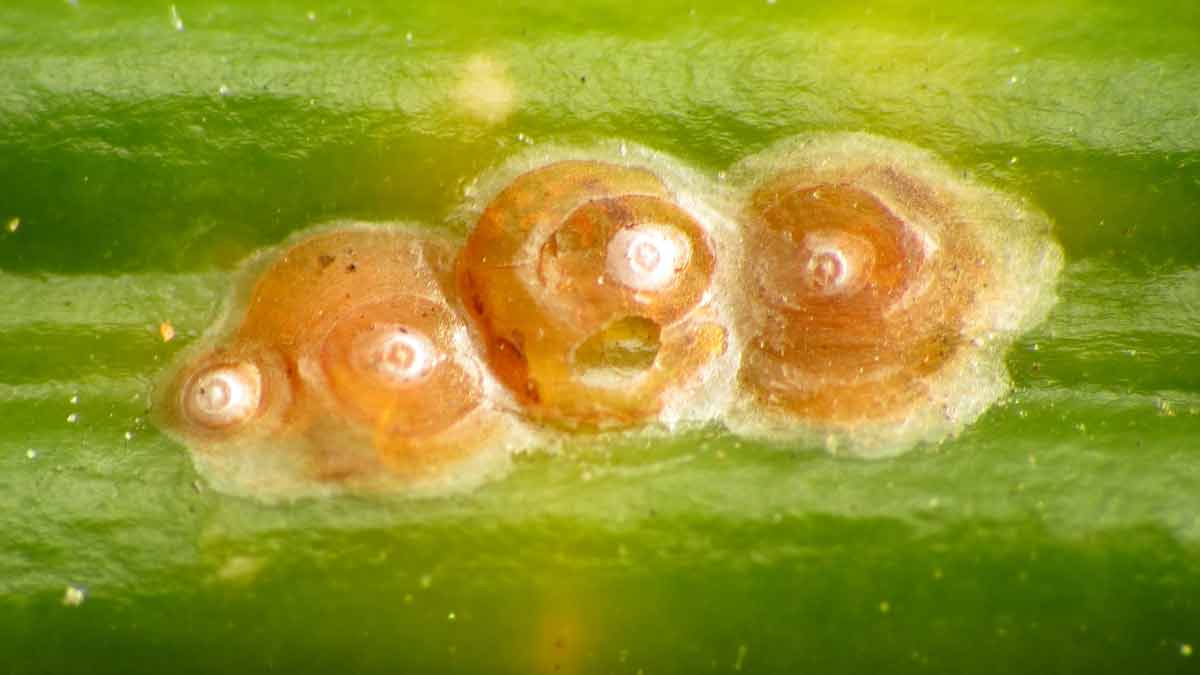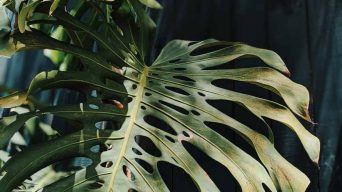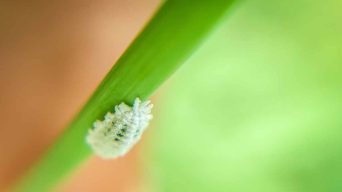Scale infestation can affect Monstera plants, causing brown lumps or bumps on the foliage and stems. Pruning affected leaves and using mild dish soap and water, or vinegar spray can help treat the infestation. Soft scale is the most common, and rubbing alcohol can also be used to remove scales.
Scale on Monstera plants can be challenging to identify and treat. Still, it is essential to do so to prevent severe damage to your plants.
Scale insects are typically small brown bumps stuck to the leaves of your Monstera plant, though they can also appear cream-colored or black.
To help you recognize an infestation early and take quick action against it, here are some tips for identifying, treating, and preventing scale on your Monstera plant.
What Are Scale Insects?
Scale insects are tiny pests that feed on the sap of plants.
They come in many shapes and sizes, but all have one thing in common: they have a hard outer shell or “scale” that protects them from predators and environmental conditions.
Depending on the species, scales may be brown, black, yellow, or even white.
The size of scales varies from species to species; some are as small as 1/8 inch, while others can grow up to ¼ inch long.
How Do Scale Insects Infest Monstera Plants?
Scale insects typically enter a plant through its leaves or stems.
Once inside the plant, they attach themselves to the surface and feed on the sap within.
As they feed, they excrete a sticky substance called honeydew, attracting other pests such as ants and sooty mold fungi.
Over time, this honeydew can build up and cause damage to the plant’s leaves and stems.
Different Types of Scale Insects That Can Infest Monstera Plants
Two main types of scale insects can infest monstera plants: soft scales and armored scales.
Soft scales are oval-shaped with a waxy coating, making them appear fuzzy or powdery.
Armored scales have a hard outer shell that is difficult to penetrate with insecticides or other treatments.
Both types of scale insects feed on the sap within the plant’s stems and leaves, which can lead to stunted growth or leaf drop if left untreated for too long.
1. Soft Scales
Soft scales are one of the most common types of scale insects found on monstera plants.
They tend to be oval-shaped with a waxy coating, making them appear fuzzy or powdery.
The most common type is the hemispherical scale, usually a light brown spot along its body.
Other soft scales include the brown soft scale (which is dark brown) and the cottony cushion scale insect (which has an off-white color).
All three types feed on sap within the plant’s stems and leaves, which can lead to stunted growth if left untreated for too long.
2. Armored Scales
Armored scales are another type of scale insect that can infest monstera plants.
They tend to be less common than soft scales due to their hard outer shells, making them more challenging to treat with insecticides or other treatments.
The most common type is the San Jose scale which is usually light brown with darker spots along its body, similar to the hemispherical scale but much smaller (about 1/16 inch).
Other armored scales include the purple scale, a reddish-purple color with a yellow band along its edge, and the bulb scales, which are grayish-brown and shaped like small bulbs.
Another difference between soft and armored scales is that the latter do not produce honeydew, the sugary substance secreted by many soft scales.
However, armored scales can still cause considerable damage to plants as they feed on their sap and weaken them.
Impact of Scale on Monstera Plants
The effects of scale on monstera plants can range from mild to severe.
The plant may experience some stunted growth or yellowing leaves in mild cases due to the reduced sap available for photosynthesis.
Severe infestations can lead to leaf drop, wilting, and in extreme cases, plant death.
Scale bugs also attract other pests, such as ants which can further damage your Monstera plant.
If you have a scale infestation on your monstera plant, it’s crucial to take action quickly to prevent further damage from occurring.
Left untreated, a pest infestation can cause significant damage to your Monstera’s health and appearance.
This includes yellowing leaves due to nutrient deficiencies caused by the pest sucking away all the nutrients from the plant; wilting branches due to dehydration; stunted growth; and, in extreme cases, death of entire branches or even entire plants if not addressed promptly enough.
The key to preventing severe damage from occurring is addressing scale infestations promptly when they first appear.
This involves identifying the type of scale and then selecting an appropriate treatment method.
How To Identify Scale Insects on Monstera Plants
Scale is a common plant pest that can affect your Monsterat. Still, knowing how to identify it to treat it effectively is important.
Signs of Scale Infestation
The first step in treating scale is recognizing the signs of an infestation.
The most obvious sign is small brown bumps or lumps stuck to the foliage and stems of the plant.
These are the scales, which are oval or round. They may also appear as small white spots on the leaves or stems.
Other signs include:
- Yellow leaves
- Wilting leaves
- Stunted growth
- Sticky honeydew
- Ants or other pests attracted to the honeydew
Common Areas of Scale Infestation on Monstera Plants
Scale typically infests areas with high humidity, such as near windowsills or air conditioners, and areas with dense foliage like leaf axils or undersides of leaves.
Inspecting these areas regularly is important to catch any potential infestations early before they spread throughout your entire plant.
If you notice any of the signs listed above, it’s essential to take action immediately to prevent further damage from occurring.
How To Treat Scale Infestations on Monstera Plants
Monstera plants can be vulnerable to scale infestations, but there are several methods you can use to treat the problem.
Some of the most effective treatments include:
Pruning Affected Areas
The simplest option for treating scale is to prune the affected Monstera leaves. This is recommended if the infestation is new and only affects a small area of the plant.
Pruning away the infected leaves will help reduce the spread of scale and give your plant a chance to recover.
Make sure you use clean, sharp scissors or pruners when pruning your Monstera, and dispose of any infected material in a sealed bag or container so it doesn’t spread further.
Washing the Plant with Soap and Water
Another non-chemical treatment for scale on monstera plants is washing them with soap and water. This method works best if only a few scales are on your plant’s leaves or stems.
To do this, mix a few drops of mild dish soap into a bucket of lukewarm water and use a soft cloth or sponge to gently wipe down all plant areas affected by scale.
Be sure not to scrub too hard, as this could damage delicate foliage or stems.
Rinse off any remaining soap residue with clean water afterward and allow your plant to dry completely before returning it to its spot in your home or garden.
Using Rubbing Alcohol or Neem Oil
If you’re dealing with an infestation that’s more severe than just a few scales, rubbing alcohol or neem oil may be necessary.
Both products effectively kill off scale insects without harming your plants.
To use rubbing alcohol, mix one part rubbing alcohol with two parts water in a spray bottle and apply it directly onto any infested plant areas of your monstera plant until they are completely covered.
For neem oil, mix one teaspoon per quart of warm water in a spray bottle and apply it directly onto any affected areas until they are completely covered.
Allow either product to sit for about 10 minutes before rinsing off with clean water afterward.
Insecticidal Soaps
Insecticidal soaps and oils effectively kill larvae but are not established or feed adults.
These products are safe for pets and children as long as they are applied correctly.
To use insecticidal soap or oil, mix the product with water according to the instructions on the label.
Then spray the mixture onto the affected areas of your Monstera plant until it is completely covered.
Be sure to cover both sides of the leaves and stems thoroughly.
You may need to repeat this process every few days until all signs of scale have disappeared.
Horticultural Oils
Horticultural oils can also be used as a treatment for scale on monstera plants.
These products work by smothering the pests, which prevents them from being able to feed or reproduce.
To apply horticultural oil, mix it with water according to the instructions on the label and then spray it onto your plant until it is completely covered.
Ensure you thoroughly cover both sides of the leaves and stems for the best results.
It’s important to note that horticultural oils should only be used in early spring before buds begin to open. They can damage new growth if applied too late in the season.
Systemic Insecticides
Systemic insecticides are another option for treating scale on monstera plants.
These products work by entering a plant’s system through its roots or leaves and spreading throughout its entire body, killing any pests that come into contact with it.
Systemic insecticides are generally considered safe for use around pets and children. However, they should still be used cautiously as they can be toxic if ingested or inhaled in large quantities.
When using systemic insecticides, follow all instructions carefully. Wear protective clothing such as gloves and a mask while applying them to your plants.
When To Seek Professional Help For Treating Scale On Monstera Plants
If you find that none of these methods seem to be working or are concerned about using chemicals around your family or pets, it may be time to seek professional help for treating scale on monstera plants.
A professional pest control company will be able to identify what type of pest is causing your problem and recommend an appropriate course of action based on their findings.
They may also suggest using natural methods, such as introducing beneficial insects into your garden or using traps instead of chemical treatments if possible.
Whatever method they choose, follow their advice carefully so you can get rid of scale once and for all!
How To Prevent Scale On Monstera Plants
When managing pests in Monstera plants, the most effective approach is always prevention.
To prevent scale from invading your monstera plants, here are some tips that can help:
Keeping Monstera Plants Healthy and Stress-Free
The best way to prevent scale from taking over your Monstera plant is by keeping it healthy and stress-free.
Ensure you provide your plant with the right amount of light, water, and fertilizer.
It’s also essential to ensure your Monstera isn’t exposed to extreme temperatures or drafts.
If you’re growing your plant indoors, keep it away from air conditioners or heaters that could dry out the leaves or cause temperature fluctuations.
Regularly Inspecting Plants for Signs of Infestation
Inspecting your Monstera plants regularly for signs of scale infestation is a good idea.
Look closely at the stems and leaves for minor bumps or discolored patches – these are telltale signs of scale insects.
You may also notice the presence of brown spots on the plant leaves or black sooty mold growing near where the scales are located – this is caused by a sticky substance secreted by the scales as they feed on the plant juices.
If you notice any of these signs, take action immediately to prevent the infestation from spreading.
Quarantining New Plants Before Introducing Them To Your Garden
When bringing new plants into your home, it’s always a good idea to quarantine them before introducing them to other plants to avoid potential pest problems.
Place the new plant in an isolated area away from other houseplants and scrutinize it for any signs of pests before adding it to your collection.
This will help ensure that any existing pests don’t spread throughout your collection.
Final Thoughts
A Monstera plant, commonly known as the Swiss cheese plant, is a unique and beautiful species that add interest and life to any home.
They are easy to care for but can become overwhelmed with scale insects if left unchecked.
Fortunately, with the proper treatment and prevention methods, you can quickly eliminate these insects and keep your Monstera looking healthy.
Remember to be aware of any pests or diseases affecting your Monstera before they become a problem.
The earlier you spot them, the easier it will be to care for them.
Take the time to inspect your indoor plant regularly and give it the love and attention it deserves.
With care and diligence, you can enjoy a beautiful, healthy Monstera that will bring life to your home for years.







